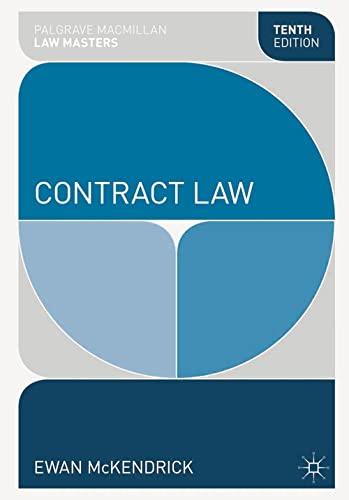what are the problem and facts in this case?
Anthony was an officer, director and shareholder of ACI Inc. The company took a loan from the Bank of Nova Scotia and Anthony guaranteed repayment of the debt. His guarantee was limited to $350,000, although the amount owed to the Bank by the company was much greater. The company default on its payments to the Bank and in October 2004, the Bank wrote a letter to Anthony advising him they had demanded payment from the company and stated that "[wje have today demanded payment of the Borrower's obligations to us... If payment of our demand is not made as required, we will take steps to recover payment from you." The company went bankrupt in December 2004, and the Bank appointed a Receiver to sell the company's assets. The sale was finalized in February 2007, but the Bank was not paid out in full. The company still owed over $1 million and as a result, the Bank's lawyer sent a second letter to Anthony and demanded payment from him of the full amount of his guarantee. Anthony did not make payment and the Bank sued him for the amount owing. When the matter came before the Court, Anthony defended and argued that he was not obliged to pay the amount of the guarantee because the Bank had not sued him within the 2 year period prescribed by the Limitation Act. Anthony argued that the limitation period started either when ACI Inc. defaulted on the loan or when the Bank sent him the first demand letter in October 2004. On that basis, he argued that the limitation period expired at latest in October 2006, and the Bank had not sued him until July 2007. Anthony's position was that the Bank's claim was statute barred. 20 | Page Not surprisingly, the Bank argued that the limitation period did not start in 2004, but that it started on June 12, 2007 when the Bank's lawyer sent the second demand letter to Anthony. This argument was based on the premise that the guarantee was a "demand guarantee" and as a result the limitation period did not start until demand was issued. The Bank then argue that the first letter sent in October 2004, was not a demand but merely a notice sent out of courtesy to inform Anthony that the Bank would look to him if the company did not pay the debt in full. Both Anthony and the Bank conceded that the limitation period expired after 2 years and the only question was when did that period commence. For Anthony, the answer would determine whether or not he had to pay the Bank $350,000. Fraud and the Mortgage Lender Mr. Gill owned a residential property in British Columbia. In November 2005, an unknown fraudster forged Mr. Gill's signature and transferred the property to Guijeet who was a participant in the fraud. Gurjeet then borrowed $40,000 from Mr. and Mrs. Bucholtz who registered a mortgage against the property to secure the repayment of their loan. The Bucholtz mortgage was registered against the property on November 10, 2005. On December 8, 2005, Gurjeet mortgaged the property to 4337 Investments Led. ("4337") to secure a second loan for $55,000. That mortgage was submitted for registration in the Land Title Office but before it was registered Mr. Gill discovered that the property had been transferred and he filed a caveat against the land and started legal proceedings to recover the property. Although the registrar at the Land Title Office refused to register 4337's mortgage as a result of the caveat having been filed, the parties proceeded as if both mortgages were properly registered. Neither the Bucholtz nor 4337 were aware that the property had been fraudulently transferred and they had both sought and obtained confirmation of Gurjeet's identity before they advanced funds. As a result, both lenders argued that their mortgages should be recognized as valid charges against the property. Mr. Gill obviously argued that the mortgages were invalid and he sought an Order from the court that the mortgages be discharged and the property be returned to him. The problem for the Court was that a basic tenant of the Torrens Land Registry System is that parties are entitled to rely on the state of the registry when purchasing property and acquiring other interests in land such as a mortgage. Those who suffer a loss as a result of an error in the registry are entitled to make a claim against the Registry Assurance Fund, but that does not invalidate the transaction. How should the Court resolve this case given that both Mr. Gill and the two lenders were innocent victims of a fraud? Should Mr. Gill get the property back? Should the mortgages be discharged? Should either Mr. Gill or the lenders have a claim against the Registry Assurance Fund? Is there any other way that Mr. Gill or the lenders could protect themselves







